The Boss's businessmen in pinstripes have played with great efficiency and pop since dominating their division, reminding me of their late 1990s run, when they reeled off four World Series wins in five years (1996, and 1998-2000). After a spate of playoff failures against the Boston Red Sox, and the annual post-season disappearance at the plate of A-Rod, the Yankees are again taking the field and games like champions. Their off-season acquisitions have also paid off, in particular the multimillion-dollar contract they offered to CC Sabathia, the 6'7", 290 lb southpaw powerhouse who after a bumpy start in April won 19 games for them with a 3.37 ERA, growing stronger as the months advanced. Sabathia has been dazzling so far in the post-season run, and was name American League Championship Series MVP.
Also working out well has been two other acquisitions: switch-hitting first baseman Mark Teixeira, who hit 39 home runs and drove in 122, tops on the team, and righthander A. J. Burnett, whose 13-9 record helped put the Yankees atop the AL East. While Teixeira has been a factor in playoffs so far, Burnett hasn't. Another factor in the Yankees' run this year has been lefthander Andy Pettitte. One of the Yankees' aces during the late 90s, George Steinbrenner let him go despite a 21-8 season in 2003 and a 16-9 playoff record, and during his absence the Yankees' playoff hopes fizzled. Pettitte returned two years ago, however, and with Sabathia, Burnett, and very young pitchers Joba Chamberlain and Phil Hughes, constituted one of the best starting rotations in the American League. Last night Pettitte pitched another gem, sending the Los Angeles Angels of Anaheim, who also sank themselves with onfield mistakes, back to Orange County, and setting them up for a battle with the Phillies.

My iPhone sketch of CC Sabathia
This matchup could be called the Original US Capital Cities Series, or the Original Major League Baseball Teams Series, or the New Jersey Transit Series, or the New Jersey Turnpike Exit series, or Competing Jersey Media Market Series, or the Two Cities that Dominate New Jersey Series, or the Two Cities Hosting Ivy League Universities Equidistant from Princeton and Rutgers Universities Series, or something else altogether. It's been 59 years since the two teams faced off in the World Series, which the Yankees, in their most glorious era, won 4 games to 0. The 2009 Phillies have very good pitching, especially in starters Cliff Lee and Cole Hamels, and a dangerous lineup, with good contact hitters like Chase Utley, Shane Victorino, and Pedro Feliz and a slugger for the ages in St. Louisan Ryan Howard. They more than match up well with the Yankees. They will also have the edge in the games played in Philadelphia, since the Yankees will lose a bat in their order, though Sabathia's very handy at the plate; neither ballpark is particularly pitcher-friendly.
I'm going to give my nod to the Bronx Bombers. If they can get outstanding pitching performances out of Sabathia and Pettitte, some offense from A-Rod, and close games out effectively under the Chamberlain-Hughes duo before future Hall of Famer Mariano Rivera has to take the mound, they will win. This is asking a tall order, but I think it's possible. I'm looking forward to watching every game if I can. (And if you have free tickets, you know, you can always share!)
***
Tomorrow, composer-critic-brilliant person MR Daniel will be presenting work at Princeton University, at 8 pm, at
Taplin Auditorium, in Fine Hall.
The Celestial Mechanics vocal trio will be performing her new three movement vocal piece, My Father and I Are Playing. She writes of them: "I've known the performers in this ensemble for a couple of years, and I'm really excited by what I've heard of their approach to the piece so far. And they're really excited to be doing the piece--always a good combination!" I can say that I've heard some of her work live (in Chicago, and online), and I'm really excited to hear more.
Daniel be accompanying the vocal trio with a live visuals mix, and is part of the Composers Ensemble program at Princeton University. Celestial Mechanics is also performing work by "members Lainie Fefferman and Anne Hege, along with Michelle Nagai and Jascha Narveson, and piano works by David T. Little."
Here's another wonderful thing: if you can't make it to the actual performance there will be a live video stream with link available through the Princeton University Music Department's website. I also hope the performance is archived, because another event I'll mention below is taking place simultaneously, and also because I hope more people will get to hear MR Daniel's work.
Lastly MR writes, "(If you watch the webcast, please do let me know about your viewing experience--this is a new offering from the department)." Please do so if you can [go to the Princeton University Music Department link for more info].
***
The other event (and of course there are many) occurring simultaneously (well, a little before) with the Princeton Composers Ensemble concert is the first of four panels devoted to the work of critic-author-sage Édouard Glissant, whose Caribbean Discourse and Poetics of Relation are two of the bedrock theoretical texts of contemporary Black Diasporic and global post(-post)-colonial thought and practice. The events, sponsored by New York University's Institute of African American Affairs under the heading One World In Relation, will be taking place on the NYU campus over a series of weeks. I've had at least four different people send reminders, so I will let all J's Theater readers know about them as well. Here's the flyer:

at
presents
Édouard Glissant:
One World in Relation
Four Conversations with Édouard Glissant
whose path-breaking work, according to Gilles Deleuze,
“Ties the knot between philosophy and poetry at their deepest and purest level.”
Tuesday, October 27th
Wednesday, November 4th
Wednesday, November 18th
Monday, November 30th
Édouard Glissant is one of the most important thinkers of our time. In the 1980s, his theories of créolization, diversity and difference, as elaborated in the book Le Discours Antillais, were considered seminal texts for the emerging studies of multiculturalism, identity politics and minority literatures. In the 1990s and 2000s, Glissant’s work moved beyond the mere consideration of meanings as circumscribed by the relation of the signifier and the signified and the recognition of otherness. In his recently published book, Philosophie de la Relation, the concept is used to meditate on the new meanings of globalization, chaos, violence, equality and justice. Whereas in France and parts of Europe, Glissant’s work has inspired critics, poets, artists, museum curators, musicians, philosophers and politicians, in North America, much of its scope is still limited to the circle of Francophone literary theorists. It is now time to bring his ideas to a broader audience in the Anglophone world. With Philosophie de la Relation, Glissant points us to a possibility where our differences are no longer considered as proof of an irreconcilable fact, but as part of what relates us, makes us beautiful, complex and creative. These four conversations with Édouard Glissant will bring together philosophers, social scientists, artists and humanists to discuss his ideas across disciplines and for the larger public.
Opacity, Stupidity and the History of Unintelligibility:
The Right to Opacity as a Prerequisite for Politics and Philosophy
Tuesday, October 27th, 2009 @ 6:30 pm
Panelists: Avital Ronell, Francois Noudelmann, Joan Retallack,
Sylvère Lotringer, Tracie Morris, Manthia Diawara and Denis Hollier (Moderators)
Location:
Diversity in the Black Night: Chaos, Créolization and Metissage
Wednesday, November 4th, 2009 @ 6:30 pm
Panelists: Michael Dash, Ulrich Baer, Patricia Williams,
Kendall Thomas, Arjun Appadurai, Manthia Diawara and Judith Miller (Moderators)
Location:
Roots & Imaginary Offshoots: Ecstatic Difference
Wednesday, November 18th, 2009 @ 6:30 pm
Panel: Theory of “Relation and Difference”
Panelists include: Francois Noudelmann, Mary Ann Caws,
Breyten Breytenbach, Fred Moten, Emily Apter,
Manthia Diawara and Avital Ronell (Moderators)
Location:
De-capitalization and the Way of the World: Religion, Secularism and Multiplicity
Monday, November 30th, 2009 @ 6:30 pm
Panelists: Richard Sennett, Avital Ronell, Francois Noudelmann,
Craig Calhoun, Arjun Apadurai,
Manthia Diawara and Avital Ronell (Moderators)
Location:
Free and open to the public
Please RSVP at (212) 998-IAAA (4222)
Presented by
Supported by: L’Institut du Tout-Monde, The Institute for Public Knowledge,
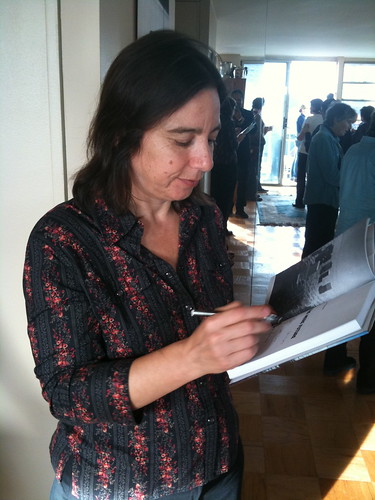
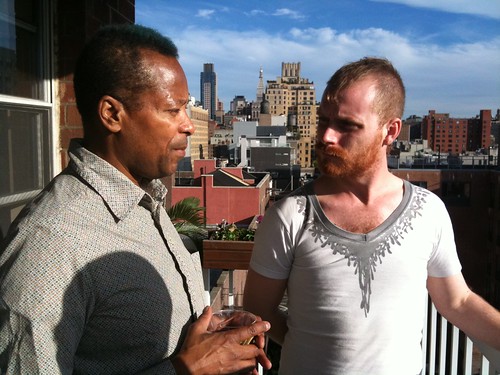
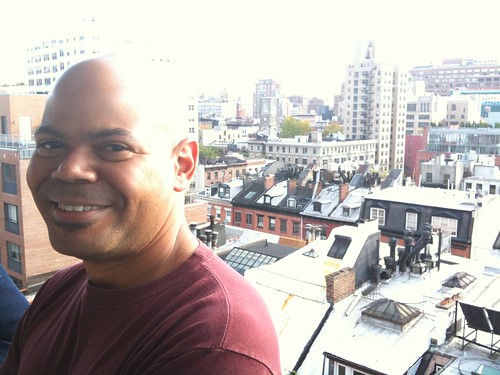
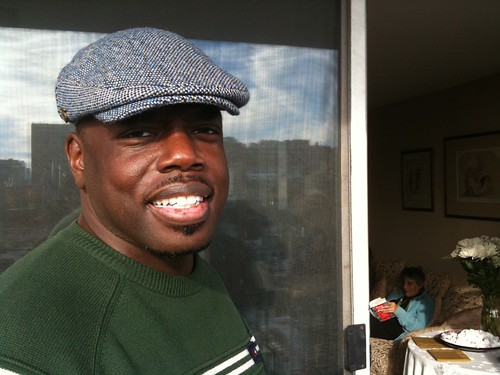
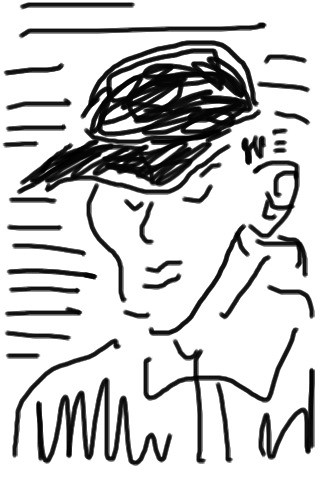



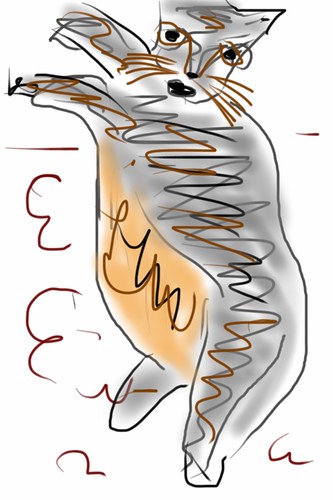
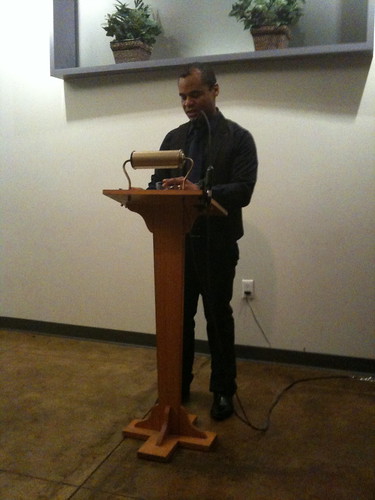
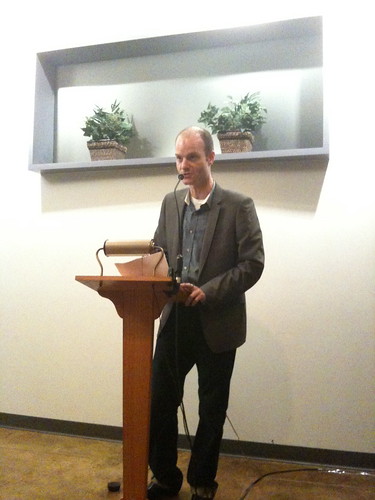

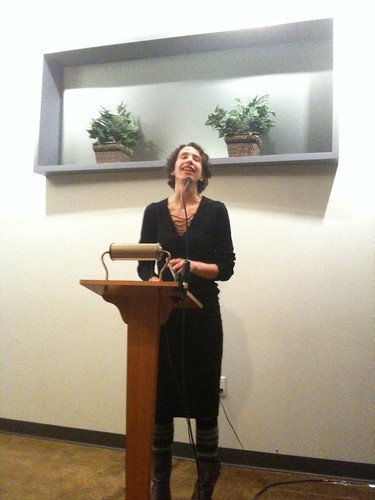
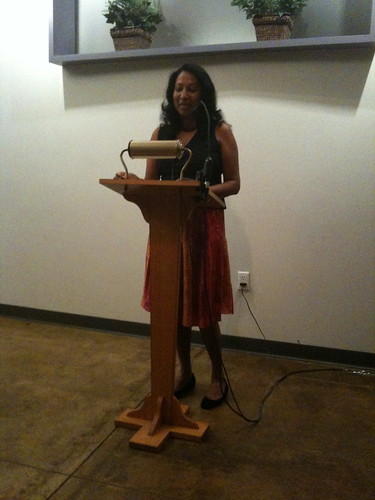
 The first involved reading and taking notes on the book,
The first involved reading and taking notes on the book, 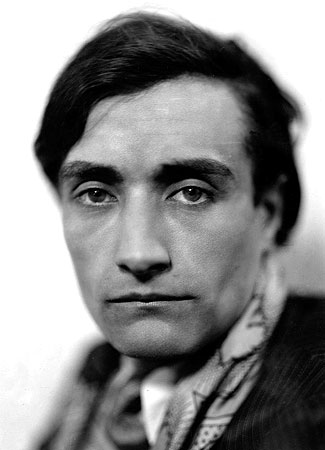 I saw several routes into this connection between Taïa's novel and Artaud's (at right, Guardian UK,
I saw several routes into this connection between Taïa's novel and Artaud's (at right, Guardian UK,  While I didn't manage to get to the pricey
While I didn't manage to get to the pricey 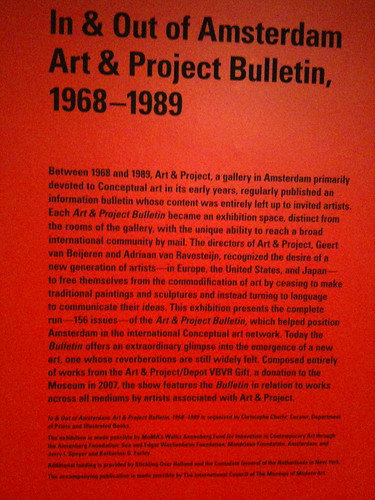



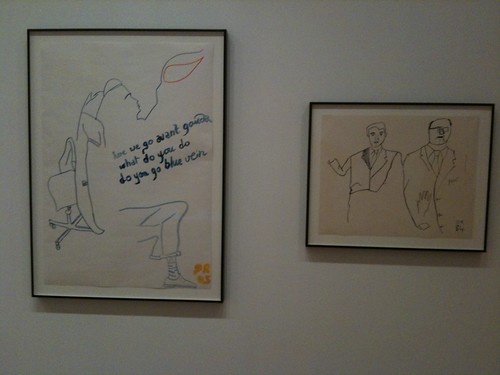
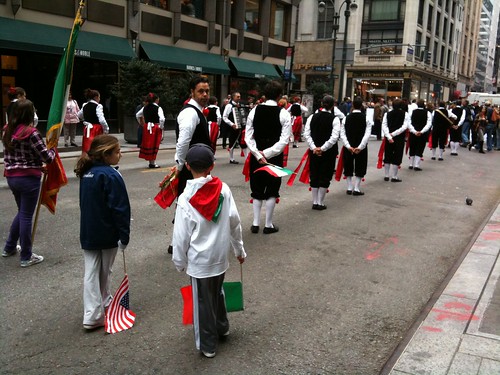



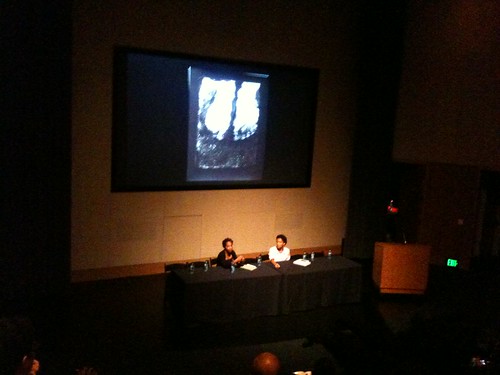

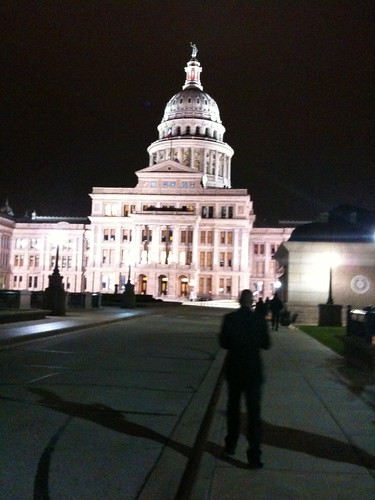
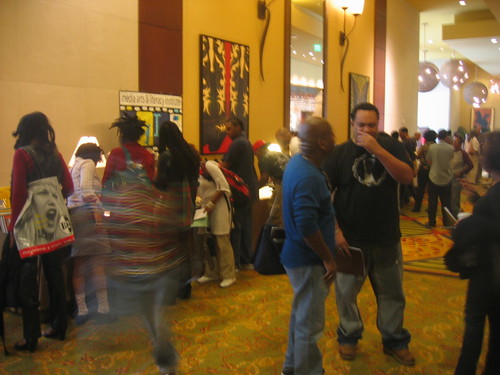
 "To render Marx disreputable was to suppress the truth that money, as a generalized value of exchange, is incarnated in civilization as waste, shit. If civilization, as Jean-Claude Milner states, is defined by its aptitude for dealing with garbage and waste, as opposed to barbarism which rejects the concept, or the insane who exclude themselves from it, I would say that the turning point of our civilization will come when we have recognized waste not only as leftovers and flaws, but as excess and superabundance. Money is the hygienic form of a superabundance of waste, a waste which is not a simple metaphor for garbage, but rather a waste which is the excess of production without any other end than its own superabundance – which also removes from production the prestige that Bataille wanted to preserve for it, the sacrificial prestige of a possible total benefit, of a cost-free expenditure. I would like to explain, building on Marx, at what point we can no longer delude ourselves with this kind of wet dream: we expected solace from it, and it is nauseating us instead."--
"To render Marx disreputable was to suppress the truth that money, as a generalized value of exchange, is incarnated in civilization as waste, shit. If civilization, as Jean-Claude Milner states, is defined by its aptitude for dealing with garbage and waste, as opposed to barbarism which rejects the concept, or the insane who exclude themselves from it, I would say that the turning point of our civilization will come when we have recognized waste not only as leftovers and flaws, but as excess and superabundance. Money is the hygienic form of a superabundance of waste, a waste which is not a simple metaphor for garbage, but rather a waste which is the excess of production without any other end than its own superabundance – which also removes from production the prestige that Bataille wanted to preserve for it, the sacrificial prestige of a possible total benefit, of a cost-free expenditure. I would like to explain, building on Marx, at what point we can no longer delude ourselves with this kind of wet dream: we expected solace from it, and it is nauseating us instead."--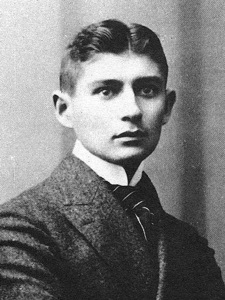


 In recent years the
In recent years the